Doing It Right
Emotional and physical risks court an awkward levity. Rural towns pool with unexpected darkness. A city reveals African nationalism’s complexities. Straight narratives, faux-tige memoirs, avant garde fiction visit various locations around the globe and different corners of the human heart. With US debuts from established international authors to novels from emerging writers, this debut fiction feature has a deep bench.
Welcome to Lagos
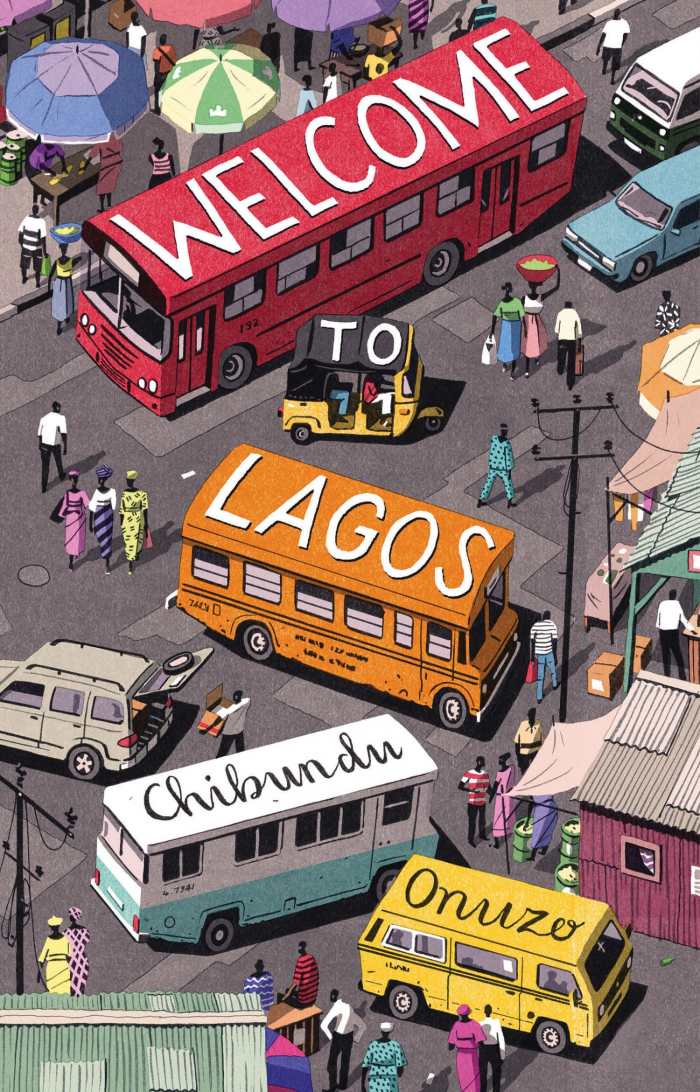
Chibundu Onuzo
Catapult
Hardcover $26.00 (304pp)
978-1-936787-80-7
Buy: Amazon
Welcome to Lagos, Chibundu Onuzo’s US debut, follows an unlikely group of Nigerians bound together by circumstance. As their lives converge, five travelers from the Niger Delta are thrown together with two of Nigeria’s privileged class; high class or low, all of them must survive Lagos itself.
In the Niger Delta, Chike Ameobi and Yẹmi Ọkẹ, two disaffected soldiers, desert their post. Fleeing, they pick up the human detritus of their actions: Fineboy, a young rebel soldier, and Isoken, the teenage orphan he may have tried to rape. Spotted as deserters, they’re forced to take these two witnesses to Lagos, too.
A fellow traveler, Oma, helps them find a hotel. She stays too. They’ve arrived, but suddenly they’re five. Meanwhile, the tides are shifting among Lagos’s elite. While the minister of education, Chief Sandayọ, decides he won’t go quietly if he’s replaced, the Nigerian Journal‘s editor in chief, Ahmed Bakare, wants to combat the country’s stagnant corruption. Soon, Lagos will bring them together for a moment that subverts and confirms everything they’ve ever known.
Lagos as a framing device illustrates the shifting, often tenuous connections between the public and private lives of Nigeria’s citizenry, and the specificity of Onuzo’s details fully embodies each character. Both concordance and witness to the story of its people, from the wealthy elite to those disappearing into the anonymous darkness found under its bridges, Lagos is full of
[big] cars, models you would never see anywhere else in Nigeria. Large houses. Money everywhere. And under these fantastic stories of riches, always a layer of unease: of daylight robberies and mysterious disappearances.
Threaded with a buoyant despair, Welcome to Lagos is a “rationale to explain a world that never got better. Despite one’s best efforts, despite one’s highest hopes: the world did not change.”
LETITIA MONTGOMERY-RODGERS (April 27, 2018)
Rubik

Elizabeth Tan
The Unnamed Press
Softcover $16.99 (256pp)
978-1-944700-57-7
Buy: Local Bookstore (Bookshop), Amazon
Rubik is a novel of ghosts—those of memory, technology, relationships, emotion, and bodies—all of them permanently impermanent. Released into these terrains, characters disappear and reappear in strange ways or not at all, the revelation of their journeys “so doubtful … It is almost heartbreaking that it all works.” Haunting, eerie, engrossing, and completely unexpected, Elizabeth Tan’s Rubik is a true original that will shock and surprise.
Rubik begins with the death of Elena Rubik. The novel is an afterlife to her brief presence, a Rube Goldberg machine where “the starting marble will not travel to the very end of the machine; instead it will set off other marbles on meticulously planned journeys.” Spiraling out from this initial impetuous, a series of protagonists drift through the background and foreground of each others’ lives, rarely suspecting their interconnectedness.
In a bravura display of modernity’s paradoxes, Rubik’s “Reality and dreams are in the end both stories that we tell ourselves. They are two keys that turn the same lock.” Seemingly distinct categories bleed together—fact and fiction, reality and fantasy, creator and created, individual and collective—as experience is co-constructed and almost pathologically diffuse.
Haunted by a hermeneutic of suspicion, Tan’s interconnections are engineered to the smallest detail. Within this elaborate plot, the narrative world sprawls. Yet, there’s a tension, a kind of expansive shrinking, the macro becoming micro as human scale is entered and lost. The freedom and curse of that loss is the constant threat of disconnection and the endless possibility of reinvention.
Traversing and conflating the various worlds—from anime to advertising, private schools to message boards, art galleries to industry—Rubik turns the dictum that “Content dictates form; form dictates content” into a paradox of epistemological proportions. Anxieties about impermanence and obsolescence play out across the panoply of humans and human creations, and the resulting ruptures break containers and content alike.
LETITIA MONTGOMERY-RODGERS (April 19, 2018)
Clean Time
The True Story of Ronald Reagan Middleton
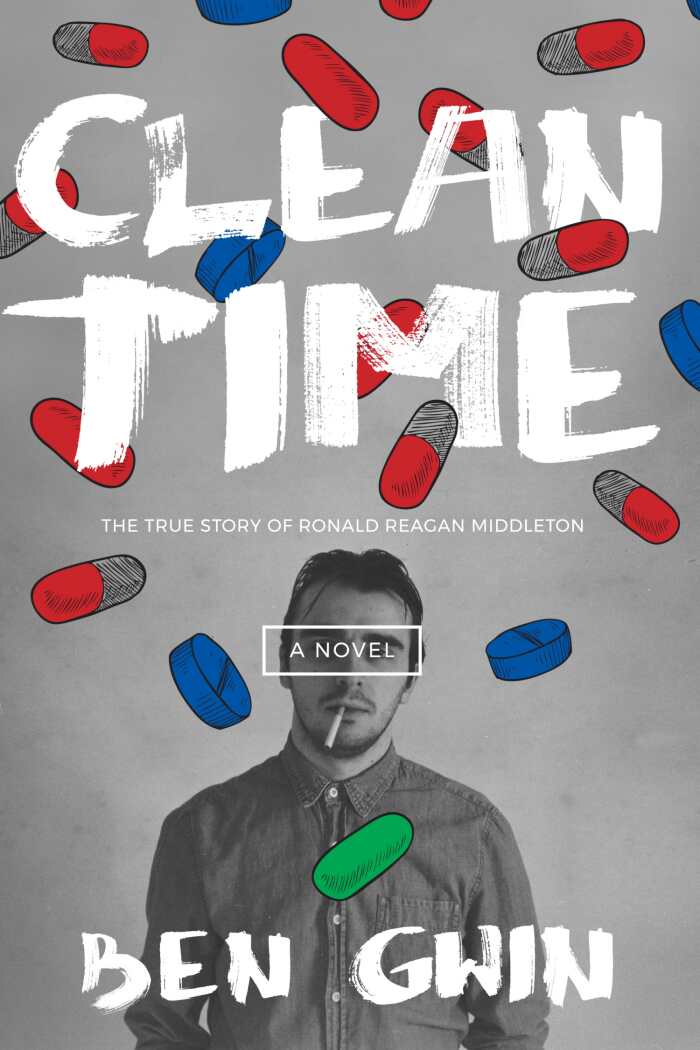
Ben Gwin
Burrow Press
Softcover $17.00 (322pp)
978-1-941681-70-1
Buy: Amazon
Ben Gwin’s complex debut novel is based around a fictional reality television sensation, Clean Time, that has catapulted various interested parties—from pharmaceutical corporations to rehab centers—to unimaginable wealth. For a handful of addicts, time spent on Clean Time has resulted in exceptional fame, but none more so than Ronald Reagan Middleton. But now he’s missing. Gwin’s novel is set up as a record of two men’s search for the man behind the man Middleton has become.
Provocative and barbed, Clean Time uses hybrid structures to deconstruct reality entertainment and drug culture, both legal and illegal. From Middleton’s writing, critical academic research, and media footage, a picture emerges of a man who’s both a cipher and the culture’s pinnacle creation.
There’s further play in the novel’s objectivity and distance toward its subject. Insights into Middleton’s origins and motivations are largely obscured, and his ability to tell his own story is variously limited, threatened, and undermined. As his story is constructed and reconstructed, any sympathy is modulated by an equivalent suspicion. The underlying sense of emotional manipulation comes to fruition in the novel’s final revelation where even Middleton’s slight redemption seems dubiously placed.
Nonetheless, the novel’s foundations are inseparable from the reality media it critiques, and straddling that tension causes some strain. In its send-up of “reality” entertainment, the novel also appropriates a certain grittiness. It too benefits from trafficking in the fictionalized “real” experiences of addiction, drug crime, and upper-class dysfunction, even as it interrogates these tensions by telling Middleton’s story.
A deeply flawed hero who’s strung up and strung out, Middleton experiences a destructive spiral that puts him at the center of an unwelcome reality media blitzkrieg. Clean Time attempts to understand the making of these cultural devils and heroes in one person: Ronald Reagan Middleton, a modern Ulysses lost down the rabbit hole of American cultural privilege.
LETITIA MONTGOMERY-RODGERS (April 27, 2018)
Afternoons with Harvey Beam
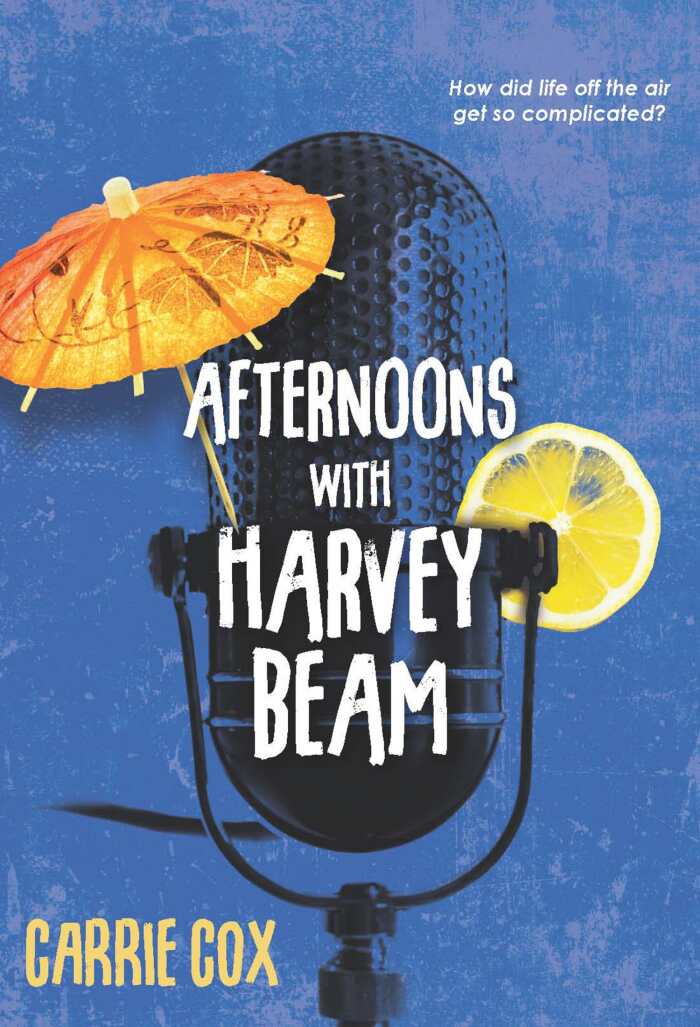
Carrie Cox
Fremantle Press
Softcover $17.99 (198pp)
978-1-925591-08-8
Buy: Local Bookstore (Bookshop), Amazon
When Harvey Beam discovered his talent for talk radio, he poured himself into work, launching himself from remote Shorton to glittering Sydney to become a national star.
But his star is waning, and all he left behind isn’t waiting where he left it. Not exactly. His family, even his backwater hometown, have moved on without him. And now his father’s about to do the same by dying, and “for some people—plenty of people, he imagines—that’s a big deal.” Harvey is about to find out for himself in Carrie Cox’s Afternoons with Harvey Beam.
Harvey Beam is self-involved. On the air, that’s his greatest strength; everywhere else, it’s his greatest weakness. Harvey’s family relationships, marriage, connection with his two daughters, friendships—and now his work—have steadily dwindled; he’s avoided examining the paradox, but he can’t avoid it any more. Faced with job termination, he’s fleeing Sydney for his hometown because, ready or not, the “answer to Harvey was here, in the space occupied by the tight-jawed man called Lionel Beam.”
The male midlife crisis story is familiar, but Cox excels at creating sympathy for her emotionally stunted lead. The rehabilitation of Harvey, a deeply flawed character, is vulnerable, darkly comic, and assembled like a well-laid fire. Careful and precise, Harvey’s development is a controlled burn; Cox honors the source of his past behavior while still insisting that it’s time to let it go.
In Afternoons with Harvey Beam, death is the truth that finally sets Harvey free. The dual termination of his job and his father forces Harvey to confront the stories he’s been telling himself about who he is. As Harvey’s questions and doubts are silenced, he’s finally able to make connections between the child he was and the man he’s become.
LETITIA MONTGOMERY-RODGERS (April 27, 2018)
The Very Marrow of Our Bones
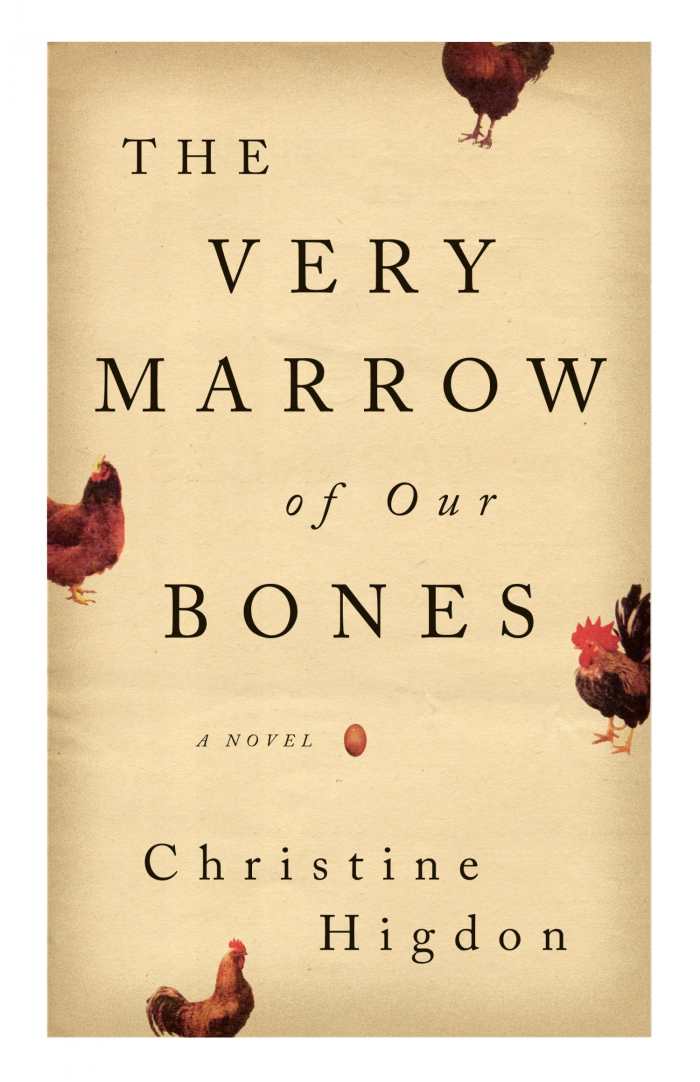
Christine Higdon
ECW Press
Softcover $16.95 (440pp)
978-1-77041-416-7
Buy: Local Bookstore (Bookshop), Amazon
“The note said: Wally, I will not live in a tarpaper shack the rest of my life. Love, Bette.” That’s what ten-year-old Lulu Parsons discovered on the kitchen table the day her mother and their neighbor, Alice McFee, disappeared. And she hides it.
Over the next forty years, Lulu tries to navigate this absence, tortured by pain, grief, and guilt, never knowing if her mother is still alive or murdered as the rest of the town suspects. Probing the kind of pain that “leaves you shattered and speechless,” Christine Higdon’s The Very Marrow of Our Bones toes the edge of grim darkness as it explores the shape of absence in the loves and lives of those left behind.
The majority of the novel alternates between two narrators: Lulu Parsons and Doris Tenpenny. Their intertwined stories span the four decades from shortly before these mysterious disappearances to a fictive present.
Because Lulu is one of five children growing up in the aftermath of her mother’s disappearance, her story is always shadowed by the disappearance of her mother. What fills Bette’s absence has the allure and danger of the void, best embodied in Lulu’s relationship with Aloysius McFee, the spouse of the other woman who disappeared.
Only slightly older than Lulu, Doris Tenpenny, the mute daughter of the local hellfire-and-brimstone preacher, watches this relationship unfold from her egg stand, scalded by the knowledge of her own unwanted contact with Aloysius. His problematic character forms an invisible bond between the two as each woman’s sense of home is taken away and slowly reconstructed with unexpected and often unwanted givens.
Brutal and punishing with occasional grace notes, The Very Marrow of Our Bones is concerned with morbidity—both the human capacity for it and what people make of it when it becomes the raw material of their lives.
LETITIA MONTGOMERY-RODGERS (April 27, 2018)
The Honey Farm
Harriet Alida Lye
Liveright
Hardcover $25.95 (336pp)
978-1-63149-434-5
Buy: Local Bookstore (Bookshop), Amazon
One April, a notice shows up in publications across Canada: “A free retreat for artists, writers, thinkers! … Also learn how to keep bees!” Ten artists respond, gathering at a rural, isolated farm. As members of the colony weather changes within and without, idyllic daydreams are accompanied by nightmares. Both disturbing and disturbed, Harriet Alida Lye’s The Honey Farm hinges on a terrible disquiet that forms as landscape and lives converge.
Slipping into the fictional dream is easy. Lye’s beautiful prose creates an enveloping sense of place, yet the groundwork isn’t well laid for the story’s devolution into psychodrama. Hive structure and Old Testament plagues offer rubrics for understanding the novel’s complications. Both are compelling and disquieting, yet unresolved vying between schemas disrupts potential insight into characters and the novel’s ending.
Although ten artists live and work on the farm with hostess Cynthia and her farmhand, few characters are explored. Surfaces are mistaken for substance, and early developments don’t hold up to the novel’s later weight. Though their interactions are few, this is especially applicable to the inexplicably intense relationship between Cynthia and aspiring poet Silvia.
Both characters are freighted with backstory that’s never fully addressed. Liminal connections are made between Silvia and Cynthia’s prior partner, a woman who’s bisexual, mentally unstable, and keeping Cynthia from their daughter. Silvia’s childhood religion predisposes her to see the world through Old Testament darkness, and her attempts to relinquish this structure lead to a bewildering madness. Central to the novel’s chain of events, Silvia and Cynthia’s relationship implies a problematic shorthand about female sexuality and mental illness that’s clearly invoked but never unpacked.
In The Honey Farm, love and power are inextricably enmeshed. These blurred lines thread everything with threats until nothing seems reliable. Lye reconstitutes the terrain of gothic horror and the strangeness that’s bred from isolation.
LETITIA MONTGOMERY-RODGERS (April 27, 2018)
The Flourishing of Floralie Laurel
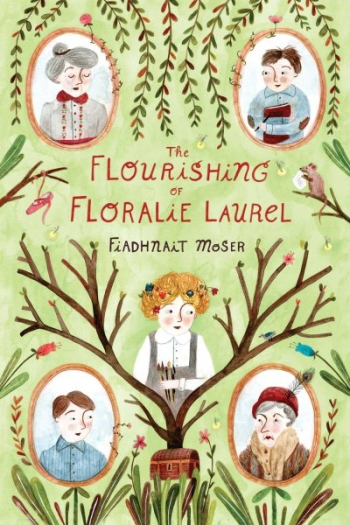
Fiadhnait Moser
Yellow Jacket
Hardcover $16.99 (336pp)
978-1-4998-0668-7
Buy: Local Bookstore (Bookshop), Amazon
Fiadhnait Moser’s coming-of-age novel, The Flourishing of Floralie Laurel, follows its heroine as she rounds the first corner of adolescence and finds very adult problems waiting. As Floralie questions who her family members are—as caretakers and as people—she’s confronted with the complex and often flawed nature of those whom she loves and craves love from in return.
It’s 1927, and Floralie is too old to keep roaming the streets of Whitterly End. Kicked out of her boarding school, she’s back with her older brother, but not for long.
Grandmother wants to make Floralie into the perfect wife, but Floralie knows she’s a painter. Desperate to outmaneuver Grandmother, Floralie enlists a street urchin and a sympathetic librarian to help her decode her mother’s secrets. In search of a rare floriography, they set out for Floralie’s childhood home in Giverny, France, where Floralie is determined to discover what happened to her mother, and also to return to a time when her imagination wasn’t “the undoing of her own heart.”
Innocence is edged with darkness as Floralie’s imagination helps her escape very real things: her father’s death, her mother’s unexplained absence, and sudden poverty, to name a few. Family secrets have festered into a silence, and she takes responsibility for understanding family rifts. Ultimately, Floralie deals with the complex anguish of loving a mentally ill parent, and the ways they can fracture a family and feed its dysfunction.
There’s freshness to this novel, and also room to grow. Floralie is a visual thinker who understands the world in pictures. Heavy imagery creates a kind of linguistic impressionism; clarity is sometimes sacrificed. While self-expression is encouraged, and rightly so, it coexists with stereotypes about artistic temperaments and mental instability.
Fantastical and poetic, The Flourishing of Floralie Laurel uses evocative imagery to explicate Floralie’s experience. On the cusp of adolescence, Floralie peers into adulthood’s penumbra and discovers the seeds from which her inner strength grows.
LETITIA MONTGOMERY-RODGERS (April 27, 2018)
Kruso
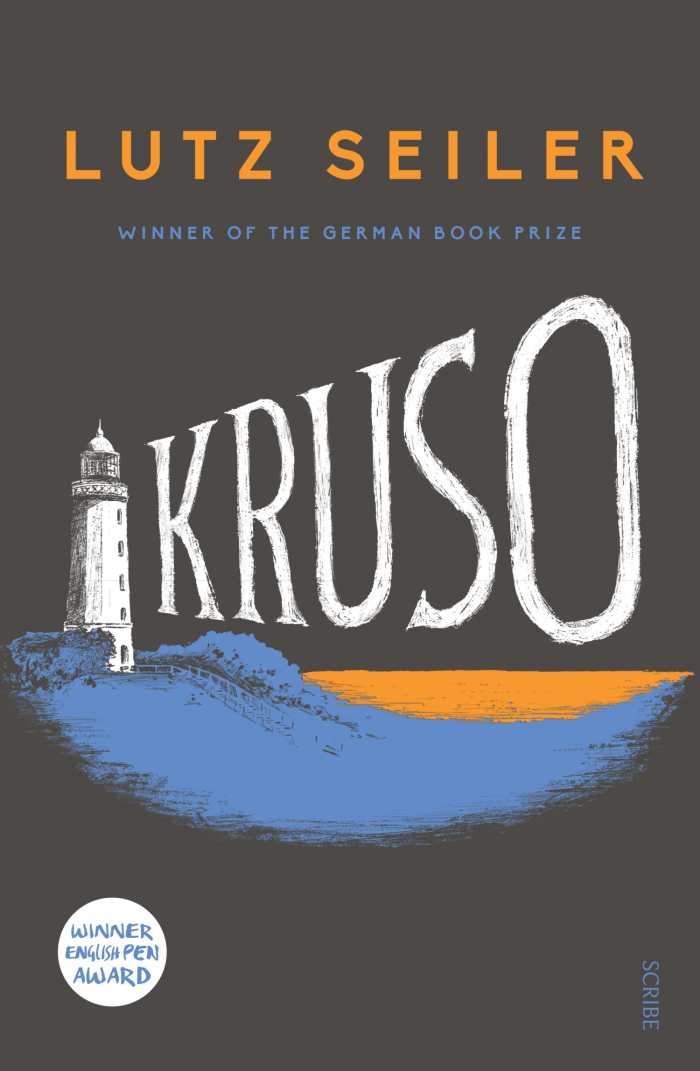
Lutz Seiler
Tess Lewis, translator
Scribe Publications
Softcover $17.95 (480pp)
978-1-947534-11-7
Buy: Local Bookstore (Bookshop), Amazon
Edgar Bendler is twenty-four years old and lost in his loss. His girlfriend is gone—perhaps missing, perhaps dead. His cat, too. Life between university terms looms, and without the distraction of study, Ed is likely to throw himself out his East Berlin apartment window.
Instead, he cobbles together just enough to escape to the Baltic. The island of Hiddensee is a strange no-man’s-land, both a Soviet-controlled vacation destination and a gateway to the West. If there’s any hope of staying longer than one day, Ed’s got to go native and find a job as a seasonal worker before he gets caught.
Ed’s time on the island mirrors Defoe’s Robinson Crusoe as seen through an early-1990s warped mirror. Interestingly, Ed isn’t a stand-in for Crusoe; rather, he’s the loyal Friday to Alexander “Kruso” Krusowitsch’s inimitable leadership in Zum Klausner’s kitchen. Over the course of a summer together, Ed stops questioning as he finds his own private escape through a deeper sink into Kruso’s world.
Ed succumbs to the haze of survival, anchored by the imperative that Kruso is his “real friend and a close one. His friend and master.” Under Kruso, Ed and other seasonal workers move between hotel duties and succoring other refugees from the communist state. All of them seek the island as both means and end, even as Kruso operates his own kind of central planning to facilitate their presence and disappearance.
Throughout the season, Ed is gradually stripped of companions and purpose. Communism collapses, the hotel is abandoned, and he discovers that many of his friends and fellow refugees were lost to the sea in their attempts to make it to Western freedom.
If communism’s final moments are an island of time, Kruso is a bottled message washed up from those distant shores. A strange journey, Seiler’s novel subscribes to island rules, with historicity suspended above and between fevered dreams of perfect community and beguiling freedom.
LETITIA MONTGOMERY-RODGERS (April 27, 2018)
Letitia Montgomery-Rodgers

